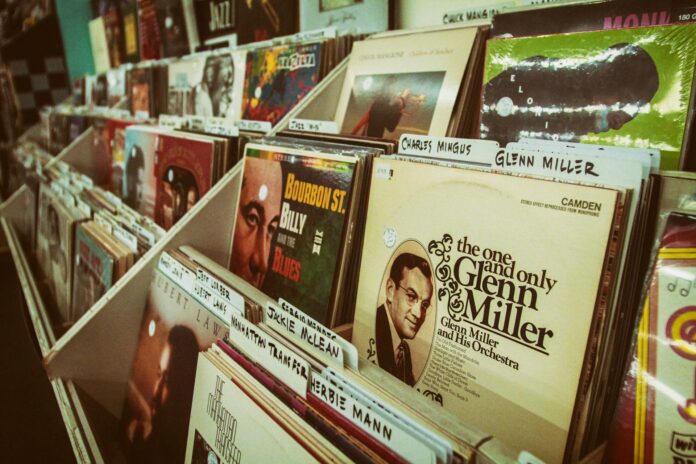by Mara Taylor
Music is not just an art form; it is a reflection of the societal values, histories, and structures of the people who create it. Music is a universal language that transcends borders, cultures, and time. It is an intrinsic part of human life, reflecting the complexities of societies and the depth of individual and collective experiences. Anthropological studies of music delve into how music functions within societies—be it as a form of communication, a means of storytelling, or a method of social cohesion. Publishing works in this field allows for a deeper understanding of the roles that music plays in rituals, ceremonies, and daily life. It sheds light on how music influences and is influenced by factors such as gender roles, economic conditions, and political climates.
In Pasajes Sonoros: Escritos sobre música, volumen I (Sound Passages: Writings on Music, vol. I), anthropologist Marcelo Pisarro offers more than just a book about music—he offers a profound meditation on sound as a portal to memory, identity, and the human experience. Pisarro’s work transcends typical music criticism or cultural analysis; it invites readers to consider the textures of sound that shape our personal and collective histories. In a world increasingly dominated by the visual, it reasserts the vital importance of listening deeply.
At its core, the book asks us to rethink how we engage with the world through sound. Pisarro moves beyond the mere auditory pleasure of music, exploring how the sonic landscapes we inhabit—from city noise to traditional folk melodies—anchor us to place and time. What makes Pisarro’s approach so compelling is his insistence on sound’s role in memory. As he navigates through various soundscapes—childhood radio stations, street performers, digital noise—he emphasizes that sound is often the thread that ties us to our past. At the same time, the book isn’t nostalgic. Pisarro acknowledges the evolving nature of sound, especially in an era of digital technologies. He explores how soundscapes are adapting in the age of streaming, where the accessibility of music has transformed how we listen, categorize, and value it.
In a world that privileges vision—dominated by screens and images—Pisarro’s focus on sound feels almost revolutionary. Pasajes Sonoros invites readers to quiet the noise of their daily visual bombardment and listen instead to the subtle cues of their environment. This invitation is particularly powerful in a society where the visual is not just dominant, but overbearing. Through his writing, Pisarro seems to say: Slow down. Close your eyes. Hear the world.
Interdisciplinary dialogue
Music is a universal phenomenon, yet it varies greatly from one culture to another. By exploring these differences, the book allow us to gain a deeper understanding of human diversity. It reveal how music serves as a means of communication, a way to build social cohesion, or a method of expressing individual and collective identities. Anthropologists studying music can uncover how different societies conceptualize sound, rhythm, melody, and performance, providing insight into the values, beliefs, and worldviews that shape human life across the globe.

Pisarro’s work sheds light on the anthropological implications of sound. Throughout the book, he demonstrates how sound forms part of cultural identity. Whether he’s discussing Shostakovich’s Fifth Symphony, tango, Ramones, Berlin avant-garde music scene or Taylor Swift’s “Welcome to New York”, Bob Dylan, Joe Strummer, Regina Spektor’s “The Party” or the eclectic beats of national folk traditions, he shows that music is a form of storytelling—one that narrates the history, struggles, and aspirations of people. Sound becomes a living document.
What’s particularly resonant about the book is its deep engagement with the politics of listening. Pisarro highlights the disparity between whose voices and sounds are heard and which are silenced. It serves as both a musical journey and a cultural manifesto. The author urges us to listen with more intention, to understand how sound shapes our sense of belonging, and to recognize the ways in which it is intertwined with identity and memory. His book is a call to reclaim the practice of deep listening in an era that so often ignores the power of sound. As we navigate a world filled with noise, Pisarro’s reflections remind us of the beauty in the act of listening—and how, through sound, we connect more deeply to ourselves and each other: “Listening is a way of being in the world,” he writes.

The book is a honest work that situates itself at the crossroads of anthropology and music. It offers not just a study of sound but a rich exploration of how music shapes and is shaped by the cultural and social realities it inhabits. Pisarro’s meticulous research unearths the profound ways in which soundscapes mirror human existence, from the intimate rhythms of daily life to the expansive symphonies of collective memory.
What makes it especially praiseworthy is Pisarro’s ability to weave the technicalities of musical composition with the interpretive nuances of anthropological inquiry. His exploration of sound is both intellectual and visceral, illuminating how the auditory experiences of different societies encapsulate their histories, struggles, and identities. Pisarro’s prose is lyrical, yet rigorous, guiding the reader through an immersive journey where sound becomes a vessel for cultural understanding.
Pasajes Sonoros isn’t just a tribute to the sonic world—it’s a reminder of how music, in its most faithful form, resonates within us all, shaping our identities, memories, and collective consciousness. In reading it, we are reminded of the power of sound not just to entertain, but to transform.
